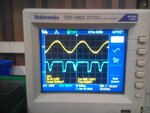pk_rulz
Newbie level 5
I have found a zero cross detection circuit at
I want to control a fan speed. So the zero cross detection is not very critical.
However I would like the power loss to be minimum. Also have been looking for low cost components.
Just wanted a review on this circuit. Does it seem rugged for commercial use.
Besides this since I also have a SMPS based 230V ac to 12V dc in my PCB. I was curious if I can use the same diode bridge of the SMPS instead of another one for this circuit. The issue seems to be the 22k resistor in the bridge which probably stops the capacitor from discharging through D3 and D4. A variant like https://obrazki.elektroda.pl/33_1305826805.png might be helpful with an intact diode bridge but I believe it greatly increases the power consumption.
I want to control a fan speed. So the zero cross detection is not very critical.
However I would like the power loss to be minimum. Also have been looking for low cost components.
Just wanted a review on this circuit. Does it seem rugged for commercial use.
Besides this since I also have a SMPS based 230V ac to 12V dc in my PCB. I was curious if I can use the same diode bridge of the SMPS instead of another one for this circuit. The issue seems to be the 22k resistor in the bridge which probably stops the capacitor from discharging through D3 and D4. A variant like https://obrazki.elektroda.pl/33_1305826805.png might be helpful with an intact diode bridge but I believe it greatly increases the power consumption.
